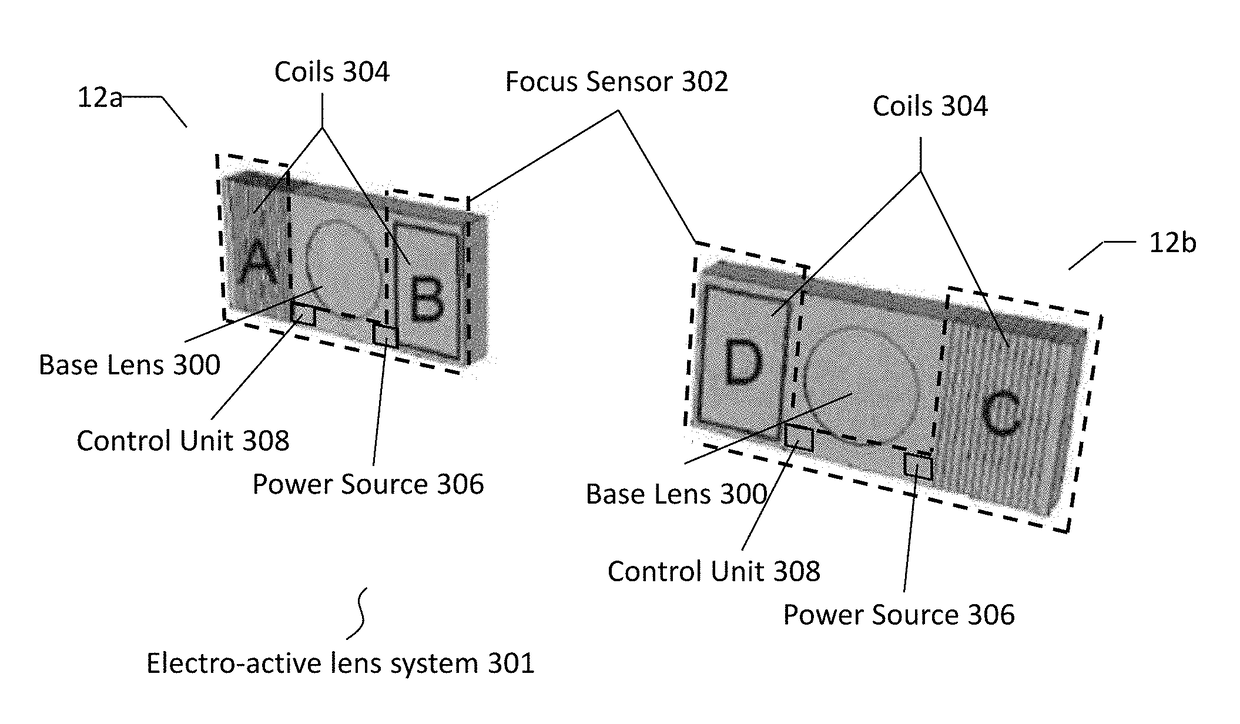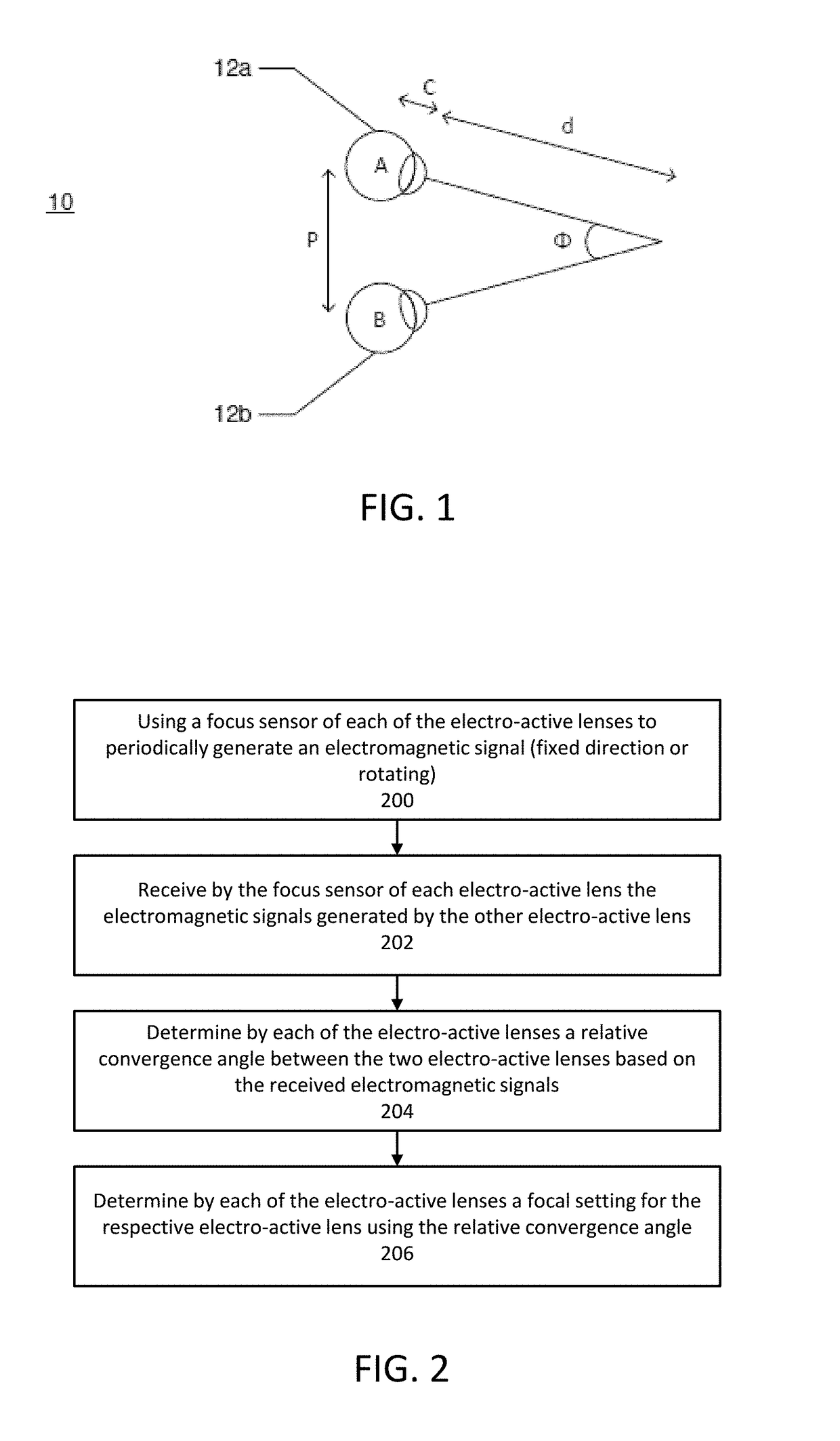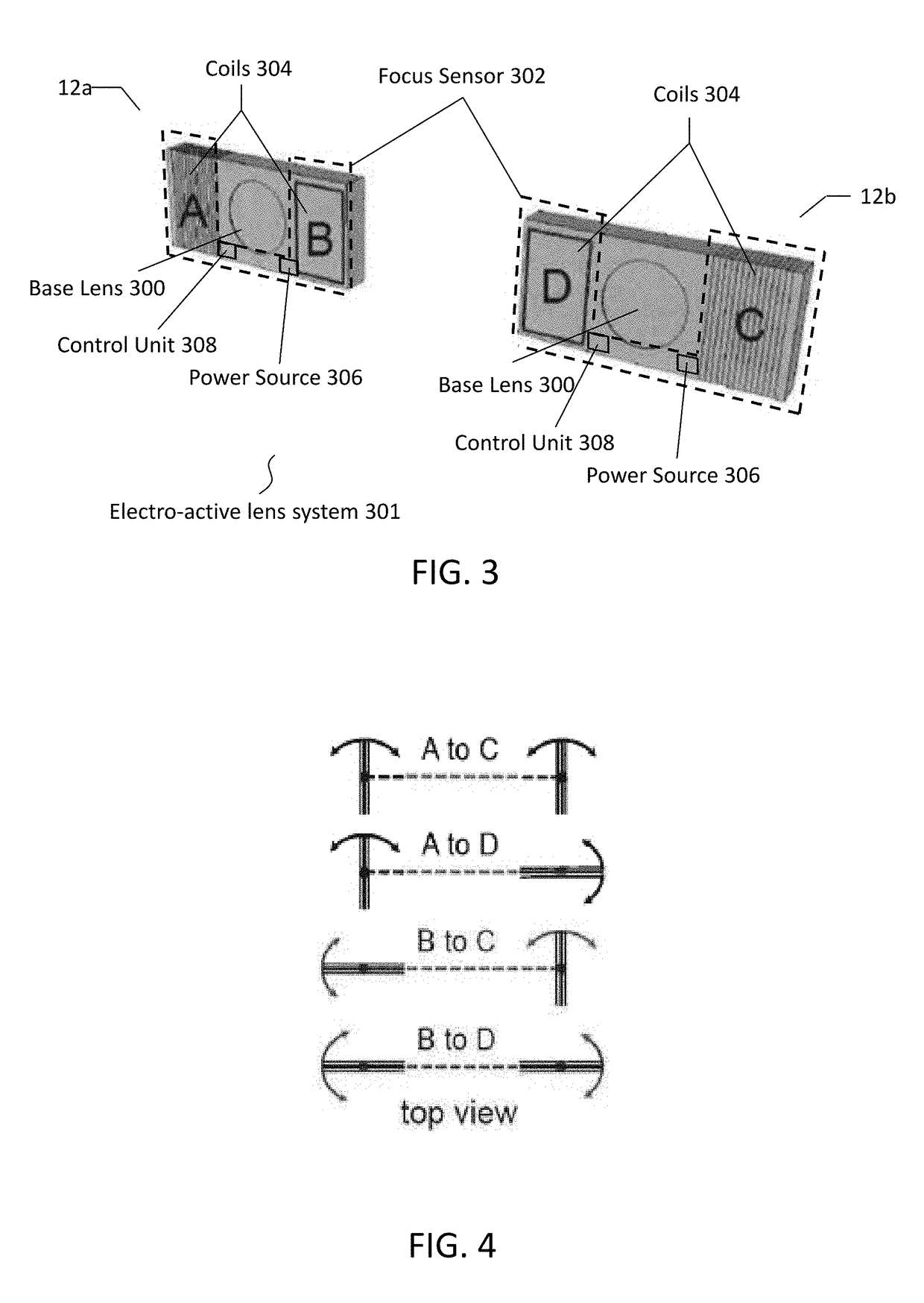Convergence-sensing electro-active accommodating lens
a technology of electro-active accommodating and convergence sensing, applied in the field of automatic focus intraocular lenses and contact lenses, can solve the problems of presenting technical challenges, conventional multifocal lenses and accommodating lenses do not operate as well as natural crystalline lenses, contact lenses, etc., and achieve sufficient measurement range and accuracy, and the need for complex power-consuming digital eye-to-eye communication. , the effect of reducing the need for large-scale power consumption
- Summary
- Abstract
- Description
- Claims
- Application Information
AI Technical Summary
Benefits of technology
Problems solved by technology
Method used
Image
Examples
Embodiment Construction
[0026]Exemplary embodiments described below relate to a method and system for determining a correct focus point for an electro-active accommodating lens system based on convergence sensing via magnetic fields, and automatically focusing the electro-active lens. Although many of the examples herein focus on IOLs, it is understood that the principles and techniques apply analogously to automatic-focusing contact lenses.
[0027]The following description is presented to enable one of ordinary skill in the art to make and use the invention and is provided in the context of a patent application and its requirements. Various modifications to the exemplary embodiments and the generic principles and features described herein will be readily apparent. The exemplary embodiments are mainly described in terms of particular methods and systems provided in particular implementation, though the methods and systems will operate effectively in other implementations. Phrases such as “exemplary embodiment,”
PUM
 Login to view more
Login to view more Abstract
Description
Claims
Application Information
 Login to view more
Login to view more - R&D Engineer
- R&D Manager
- IP Professional
- Industry Leading Data Capabilities
- Powerful AI technology
- Patent DNA Extraction
Browse by: Latest US Patents, China's latest patents, Technical Efficacy Thesaurus, Application Domain, Technology Topic.
© 2024 PatSnap. All rights reserved.Legal|Privacy policy|Modern Slavery Act Transparency Statement|Sitemap



